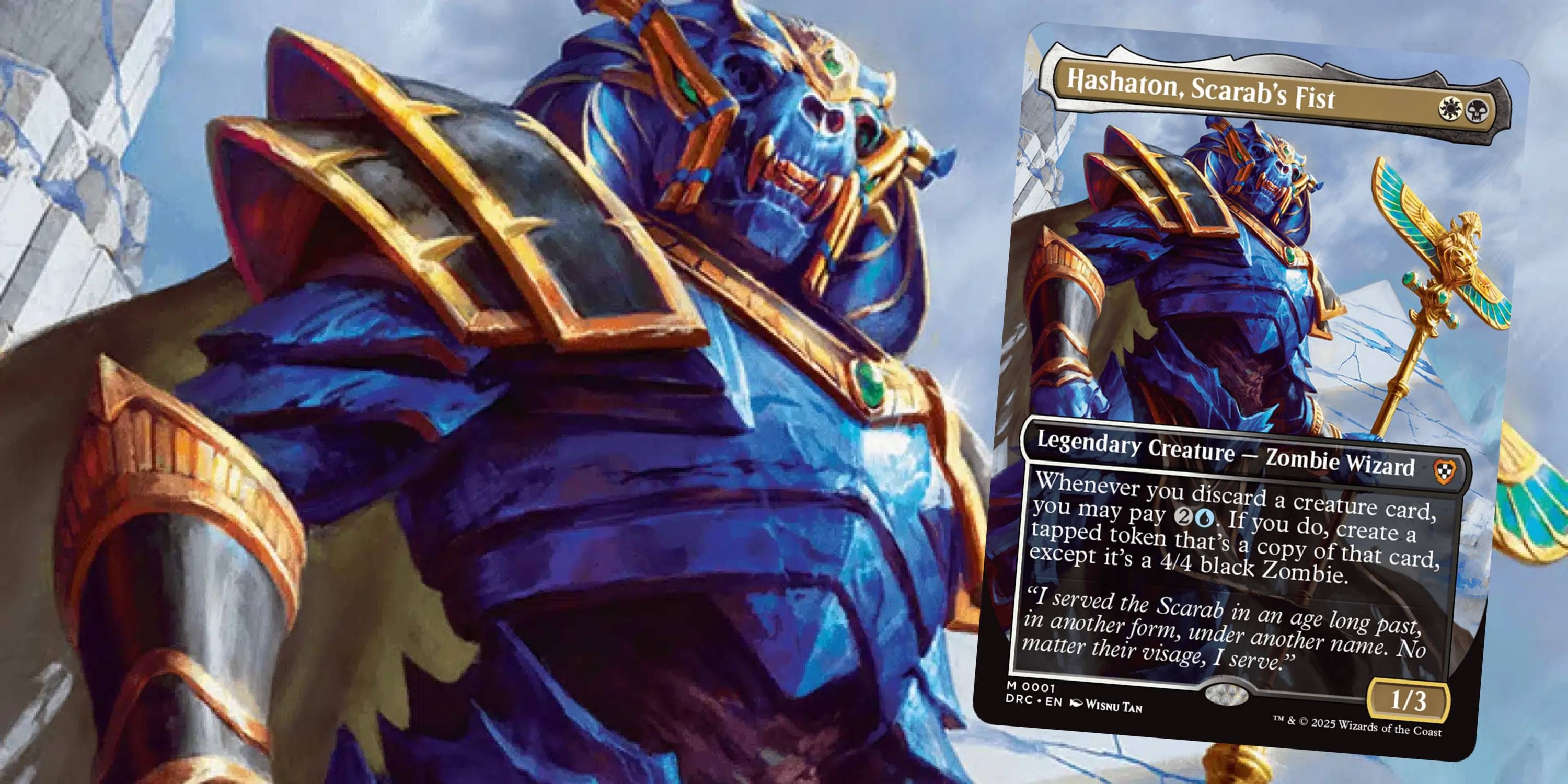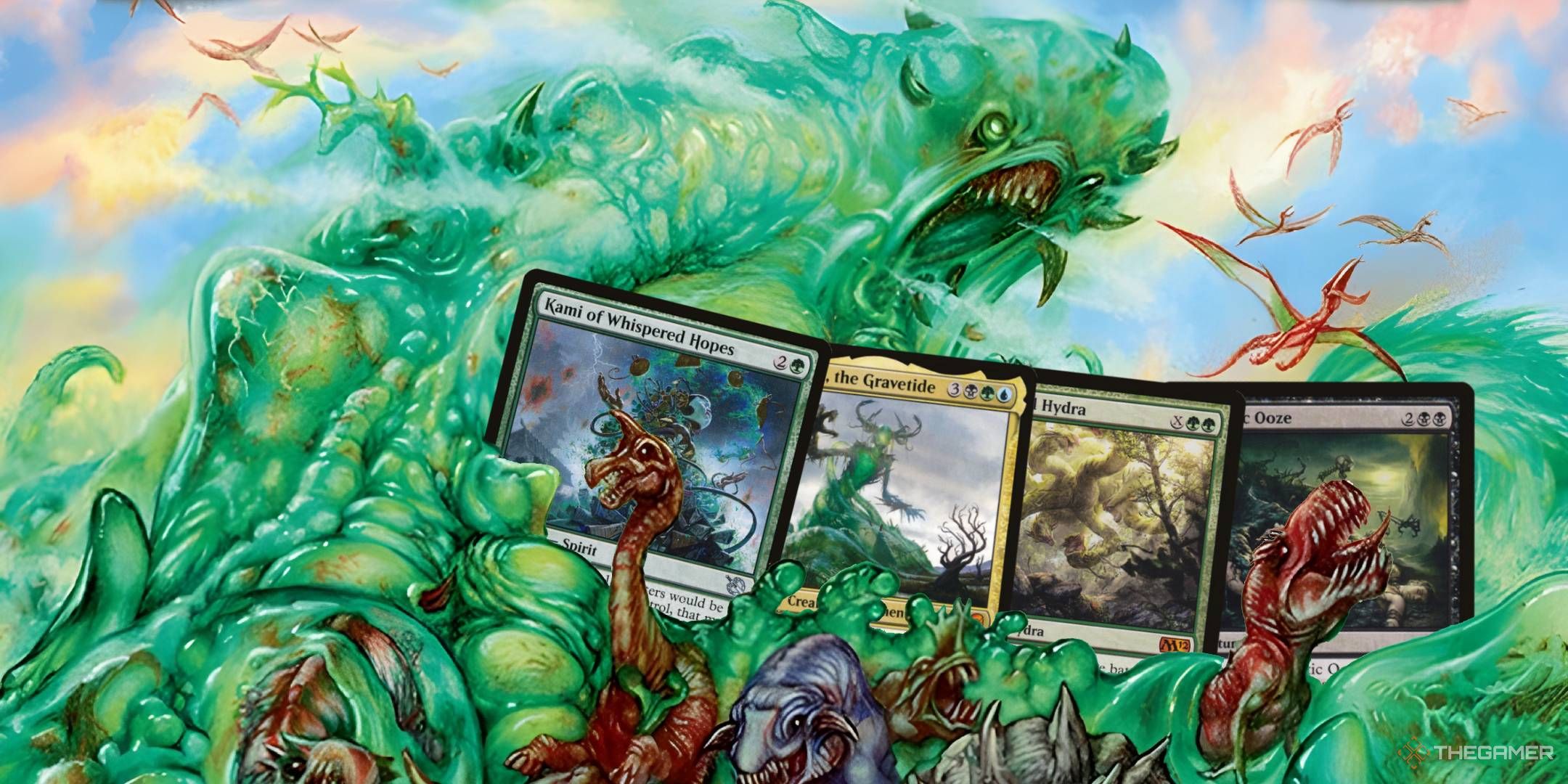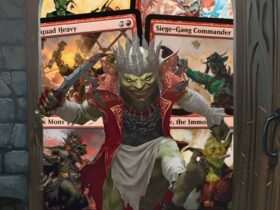Mishra, Artificer Prodigy is not a creature you would normally build a Commander deck around in Magic: The Gathering. After all, its effect involves cheating out extra copies of artifacts, something you normally can’t do in Commander since it’s a singleton format. However, that’s the appeal of Misha, it’s a puzzle to figure out.

Related
Magic: The Gathering – Oviya, Automech Artisan Commander Deck Guide
Cheat big creatures in to play with an Oviya, Automech Artisan MTG Commander deck.
As the years have gone by, the ability to make all your creatures in your deck artifacts has risen, as have the number of cards that let you play multiple copies of themselves regardless of format. This allows you to actually use Mishra’s powerful effect effectively in Commander.
Decklist
|
Commander: Mishra, Artificer Prodigy |
|||||
|---|---|---|---|---|---|
|
Tezzeret the Seeker |
Bruvac the Grandiloquent |
Pattern Matcher |
x30 Persistent Petitioners |
Ruin Crab |
Silent Arbiter |
|
Steel Overseer |
The Mindskinner |
Urza, Lord High Artificer |
Beseech the Mirror |
Beseech the Queen |
Blasphemous Act |
|
Diabolic Tutor |
Echoing Return |
Fabricate |
Ringsight |
Tasha’s Hideous Laughter |
Toxic Deluge |
|
Whir of Invention |
Arcane Signet |
Crawlspace |
Encroaching Mycosynth |
Mycosynth Lattice |
Riverchurn Monument |
|
Sol Ring |
Talisman of Creativity |
Talisman of Dominance |
Tamiyo’s Journal |
Transmutation Font |
Wishclaw Talisman |
|
Biotransference |
Black Market Connections |
Court of Cunning |
Forced Fruition |
Mechanized Production |
Propaganda |
|
Academy Ruins |
Buried Ruin |
Command Tower |
Drowned Catacomb |
Exotic Orchard |
Haunted Ridge |
|
x8 Island |
x3 Mountain |
Mystic Sanctuary |
Shipwreck Marsh |
Shivan Reef |
Smoldering Marsh |
|
Spire of Industry |
Stormcarved Coast |
Sulfur Falls |
Sulfurous Springs |
Sunken Hollow |
x7 Swamp |
|
Underground River |
|||||
The decklist contains one planeswalker, 37 creatures, nine sorceries, one instant, 11 artifacts, six enchantments, and 34 lands. This deck utilizes Persistent Petitioners as the card that can run multiple copies of itself, making for a powerful mill deck.
This decklist uses Persistent Petitioners as its star card of choice. However, if you want a more creature-based strategy, you can use Relentless Rats instead of Persistent Petitioners.
Key Cards
Mishra, Artificer Prodigy
The commander of the deck, Mishra, Artificer Prodigy is a card that is useless on its own. You need a permanent that makes all your creatures and/or permanent into artifacts. Once you have this, then you can start making use of Mishra’s ability.
The wording on Mishra is a bit old. The effect triggers whenever you cast an artifact spell, so Mishra will trigger even if the original Persistent Petitioner spell is countered.
This deck pairs Mishra with Persistent Petitioners, letting you bring out every copy of the card from anywhere so long as you have one copy to play. Since Mishra doesn’t do anything outside of this combo, do not cast Mishra until you’re able to cast a copy of Persistent Petitioners.
Persistent Petitioners
Persistent Petitioners is the most important card in the deck, arguably moreso than the commander itself. It is the easiest way to mill your opponent by either tapping itself or tapping four Advisors. When combined with Mishra, you can bring out 30 copies of it, giving you seven different triggers.
If you have all 30 copies of Persistent Petitioners on the battlefield, you can mill someone for 84 cards. Since your opponents draw seven cards at the start of the game, that leaves you with only nine more cards you need to mill. By the time you get your combo going, odds are all 30 Persistent Petitioners can mill the rest of someone’s library.
Biotransference
Biotransference is the best of the cards that turn your creatures into artifacts. It makes all creatures artifacts regardless if they’re being cast, on the battlefield, or in the library. This lets Mishra bring out all the Persistent Petitioners copies, as they’re all considered artifacts with Biotransference on the battlefield.
As a bonus, each artifact spell you cast comes with a 2/2 token to boot. If the Persistent Petitioners plan goes south, you can fall back on an artifact token strategy to try and close out the game. These also provides you with blockers to keep up your defenses.
Both Encroaching Mycosynth and Mycosynth Lattice can make all your creature cards/spells into artifacts as well. These two and Biotransference all serve the same purpose.
Steel Overseer
While you’re primarily looking to mill your opponents with Persistent Petitioners, Steel Overseer acts as a solid backup plan that can turn all of your artifact creatures (which should be all of them) into threats in combat. It can keep growing your creatures’ stats to give them massive stats.
Steel Overseer’s main purpose is making your Persistent Petitioners into great blockers. They start as 1/3, so even just one +1/+1 counter makes them hard for a lot of creatures to kill in combat. Persistent Petitioners’ effect can be done at instant speed, letting you keep them untapped in combat then mill your opponents before your turn begins.
The Mindskinner
The Mindskinner is an easy way to get those last few cards milled you need to get rid of an opponent’s library. Since The Mindskinner can’t be blocked, you’re guaranteed to make an opponent mill at least ten cards short of a removal spell. It can get its stats boosted as well to mill even more cards.
The Mindskinner triggers off of all damage a source you control would deal. So if an opponent doesn’t have a creature to block with, you can turn all your creatures into ways to mill more of your opponents’ libraries.

Related
Magic: The Gathering – Hashaton, Scarab’s Fist Commander Deck Guide
Here’s how to play the Hashaton, Scarab’s Fist Commander Deck in Magic: The Gathering!
How To Play The Deck
A Mishra, Artificer Prodigy Commander deck is all about turning all of your creatures into artifacts, then quickly cheating out all your copies of Persistent Petitioners to mill your opponents out very quickly.
The permanents that make your creatures artifacts anywhere are far and away the most important cards in the deck, as it doesn’t function without them. You always want to use your tutors to find either Biotransference, Mycosynth Lattice, or Encroaching Mycosynth.
By nature of being a mill deck, you are not going to be very high on defenses. Luckily, Grixis (blue/black/red) allows you to play some solid stax pieces to slow your opponents down. Silent Arbiter, Propaganda, and Crawlspace all make it harder for your opponents to attack you, letting you setup without having to worry about your life total.
The primary win condition of the deck is winning through mill. Once you resolve the Mishra and Persistent Petitioners combo, you can easily mill one opponent right away, and another on your next untap step. If there’s ever a board wipe, you can use Echoing Return to bring all your Persistent Petitioners back to your hand to re-cast them with Mishra.
Alternatively, you can win the game easily using Mechanized Production. This wins you the game at your upkeep if you control eight or more artifacts with the same name. You can accomplish this with Persistent Petitioners, or cards that create the same artifact tokens like Tamiyo’s Journal and Transmutation Font.
The biggest flaw of the deck is its reliance on the Mishra and Persistent Petitioners combo. While a great combo, you have to build your whole deck around it. As such, you are weaker in a lot of other departments such as combat-based offense. You are susceptible to board wipes, and have to heavily rely on multiple cards staying on the battlefield. Despite this, once you have all the pieces of the puzzle together, you can very quickly take all of your opponents out of the game.

Next
Magic: The Gathering – Mimeoplasm, Revered One Commander Deck Guide
Aetherdrift’s Mimeoplasm, Revered One is oozing in value for Magic: The Gathering’s Commander format.



















Leave a Reply